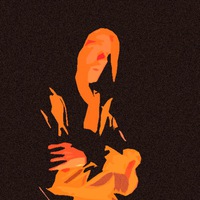#мышкины_записки ( #костница и #кости)
В ассуарии Кутна-Горы стоит побывать хотя бы #один раз. #Костница, хоть и частично находящаяся на ремонте, прекрасно отражает замысел создателя. По легенде в 1278 аббат Генрих был послан в Святую Землю королём Пршемыслом Отакаром II, с целью привезти землю с Голгофы на местное кладбище. Весть об этом распространилась чрезвычайно быстро, и кладбище стало очень популярным местом захоронения среди жителей Центральной Европы. Прибавьте к этому многочисленные войны, эпидемию Чёрной Смерти и получится, что кладбище разрослось настолько,что крайне остро встал вопрос: " А где, собственно, хоронить -то"? Выход был найден. В 1400 году был построен новый готический собор с хранилищем для костей. #Собор несколько раз перестраивался, но груды костей, которые обмывал и складывал полуслепой монах ( опять же, по легенде) , продолжали #лежать, пока в 1784 году земли не выкупила семья Шварценбергов. В 1870 Шварценберги наняли резина по дереву Франтишека Ринта для того, чтобы он привёл в порядок груды сложенных костей. #Результаты его, безусловно, гениальной работы, можно наблюдать и #сейчас. С середины нефа свисает огромная #люстра ,полностью сложенный из костей, по четырем сторонам от него расположены декоративные столбы из костей, а чуть поодаль находятся огромные груды костей, сложенные в виде холмов. Но особенно стоит отметить фамильный #герб Шварценбергов ( на фото), который полностью сложен из костей.
Ощущения, во время нахождения в ассуарии, странные. Сильно пахнет сыростью, но осознание того, что перед тобой, в виде разобранных скелетов, находится, по меньшей мере, 40 000 человек, приводят в благоговейный #ужас. Хочется, одновременно, #восхищаться и бежать оттуда в страхе.
#мышкиначехия
В ассуарии Кутна-Горы стоит побывать хотя бы #один раз. #Костница, хоть и частично находящаяся на ремонте, прекрасно отражает замысел создателя. По легенде в 1278 аббат Генрих был послан в Святую Землю королём Пршемыслом Отакаром II, с целью привезти землю с Голгофы на местное кладбище. Весть об этом распространилась чрезвычайно быстро, и кладбище стало очень популярным местом захоронения среди жителей Центральной Европы. Прибавьте к этому многочисленные войны, эпидемию Чёрной Смерти и получится, что кладбище разрослось настолько,что крайне остро встал вопрос: " А где, собственно, хоронить -то"? Выход был найден. В 1400 году был построен новый готический собор с хранилищем для костей. #Собор несколько раз перестраивался, но груды костей, которые обмывал и складывал полуслепой монах ( опять же, по легенде) , продолжали #лежать, пока в 1784 году земли не выкупила семья Шварценбергов. В 1870 Шварценберги наняли резина по дереву Франтишека Ринта для того, чтобы он привёл в порядок груды сложенных костей. #Результаты его, безусловно, гениальной работы, можно наблюдать и #сейчас. С середины нефа свисает огромная #люстра ,полностью сложенный из костей, по четырем сторонам от него расположены декоративные столбы из костей, а чуть поодаль находятся огромные груды костей, сложенные в виде холмов. Но особенно стоит отметить фамильный #герб Шварценбергов ( на фото), который полностью сложен из костей.
Ощущения, во время нахождения в ассуарии, странные. Сильно пахнет сыростью, но осознание того, что перед тобой, в виде разобранных скелетов, находится, по меньшей мере, 40 000 человек, приводят в благоговейный #ужас. Хочется, одновременно, #восхищаться и бежать оттуда в страхе.
#мышкиначехия
#mouse-notes (#cone and #dice)
It is worth visiting the Kutna Hora Assistant at least # once. # Kostnitsa, although partially under repair, perfectly reflects the creator’s intention. According to legend, in 1278, Abbot Henry was sent to the Holy Land by King Przemysl Otakar II, in order to bring land from Calvary to the local cemetery. News of this spread extremely quickly, and the cemetery became a very popular burial place among Central Europeans. Add to this the numerous wars, the epidemic of the Black Death, and it turns out that the cemetery has grown so much that the question has become extremely acute: "Where, in fact, is to bury something"? The way out was found. In 1400, a new Gothic cathedral was built with storage for bones. # The cathedral was rebuilt several times, but the piles of bones that the half-blind monk washed and folded (again, according to legend) continued to # lie until the Schwarzenberg family bought the land in 1784. In 1870, the Schwarzenberg hired rubber on the tree of Frantisek Rint so that he would tidy up the piles of stacked bones. # The results of his certainly brilliant work can be observed # now. A huge # chandelier hanging entirely from the bones hangs from the middle of the nave, decorative bones made of bones are located on four sides of it, and a little distance away there are huge piles of bones folded in the form of hills. But it is especially worth noting the family # coat of arms of the Schwarzenbergs (pictured), which is completely composed of bones.
The sensations while in the assuari are strange. It smells strongly of damp, but the realization that in front of you, in the form of disassembled skeletons, there are at least 40,000 people, lead into reverential # horror. I would like, at the same time, to # admire and run from there in fear.
# mouse mouse
It is worth visiting the Kutna Hora Assistant at least # once. # Kostnitsa, although partially under repair, perfectly reflects the creator’s intention. According to legend, in 1278, Abbot Henry was sent to the Holy Land by King Przemysl Otakar II, in order to bring land from Calvary to the local cemetery. News of this spread extremely quickly, and the cemetery became a very popular burial place among Central Europeans. Add to this the numerous wars, the epidemic of the Black Death, and it turns out that the cemetery has grown so much that the question has become extremely acute: "Where, in fact, is to bury something"? The way out was found. In 1400, a new Gothic cathedral was built with storage for bones. # The cathedral was rebuilt several times, but the piles of bones that the half-blind monk washed and folded (again, according to legend) continued to # lie until the Schwarzenberg family bought the land in 1784. In 1870, the Schwarzenberg hired rubber on the tree of Frantisek Rint so that he would tidy up the piles of stacked bones. # The results of his certainly brilliant work can be observed # now. A huge # chandelier hanging entirely from the bones hangs from the middle of the nave, decorative bones made of bones are located on four sides of it, and a little distance away there are huge piles of bones folded in the form of hills. But it is especially worth noting the family # coat of arms of the Schwarzenbergs (pictured), which is completely composed of bones.
The sensations while in the assuari are strange. It smells strongly of damp, but the realization that in front of you, in the form of disassembled skeletons, there are at least 40,000 people, lead into reverential # horror. I would like, at the same time, to # admire and run from there in fear.
# mouse mouse

У записи 29 лайков,
1 репостов,
2823 просмотров.
1 репостов,
2823 просмотров.
Эту запись оставил(а) на своей стене Катерина Добычина















































